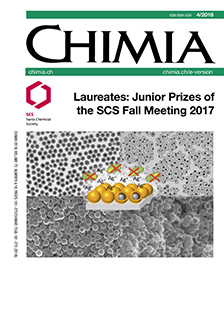Heptacoordinate Co(II) Catalyst for Light-driven Hydrogen Production in Fully Aqueous Medium
DOI:
https://doi.org/10.2533/chimia.2018.203Keywords:
Cobalt, Heptacoordinate complex, Hydrogen, Photocatalysis, Polypyridyl ligandAbstract
Photocatalytic hydrogen production is an appealing way to store solar energy as chemical fuel. The most studied molecular catalysts for H2 production are based on earth-abundant metals such as Ni, Co and Fe. Efforts have been recently focused on the design of Co complexes with distorted octahedral geometries induced by tetra- or pentapyridyl ligands. We synthesized a new Co(II) complex based on a hexapyridyl ligand that leads to the formation of an unusual heptacoordinate structure. In this paper, we review the characterization of the new catalyst and the optimization of the conditions for hydrogen evolution. The high activity reached after two hours of irradiation under visible light (475 nm) suggests that heptacoordinate cobalt complexes, not used so far in the field of light-driven hydrogen evolution, represent a promising alternative platform for the development of highly active and stable photocatalysts.Downloads
Published
2018-04-25
Issue
Section
Scientific Articles
License
Copyright (c) 2018 Swiss Chemical Society

This work is licensed under a Creative Commons Attribution-NonCommercial 4.0 International License.
How to Cite
[1]
Chimia 2018, 72, 203, DOI: 10.2533/chimia.2018.203.







